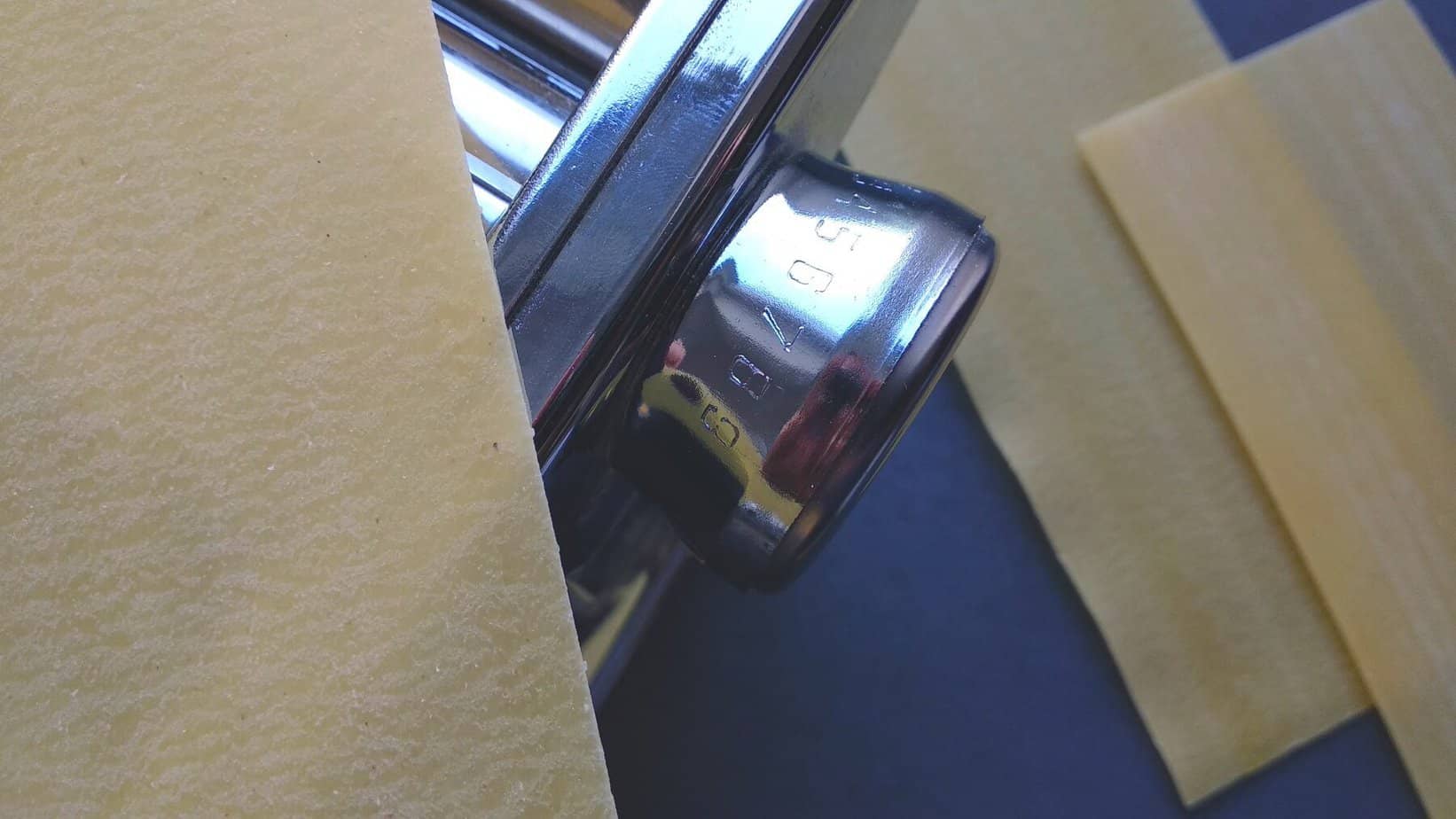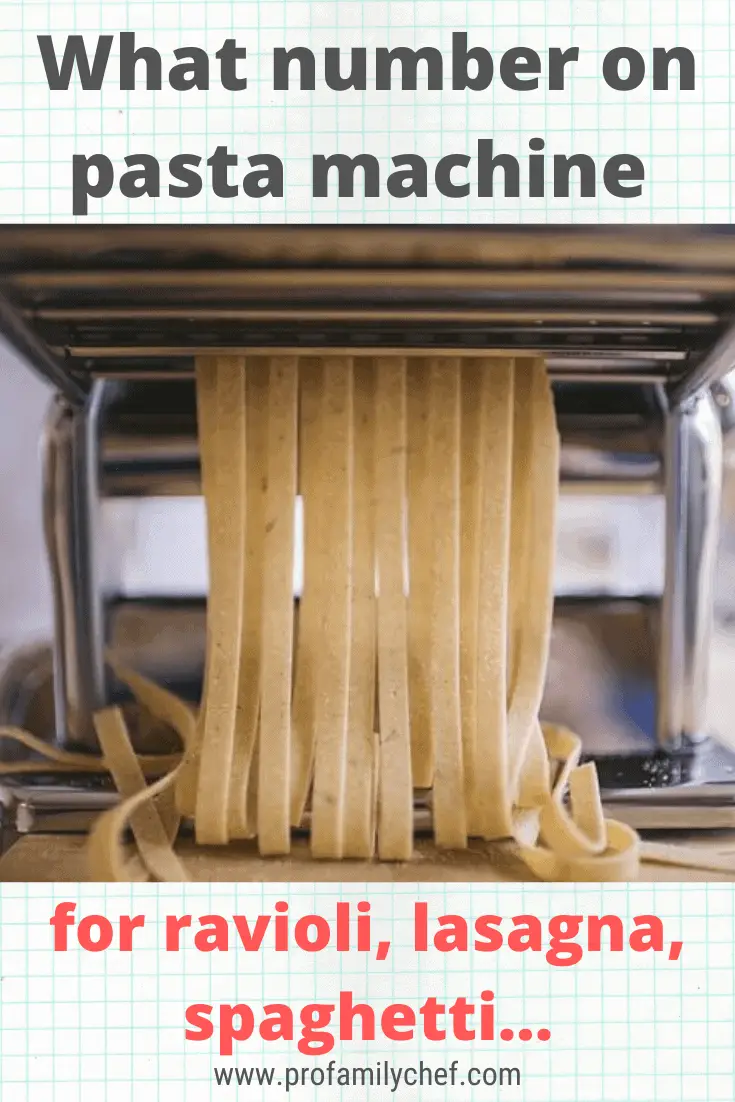Are you ready to explore the exciting world of homemade pasta? As you start your pasta-making journey, you’ll want to know how to achieve the right thickness for different types of pasta. In this comprehensive guide, we’ll break down the pasta machine settings for ravioli, lasagna, and spaghetti. We’ll also provide valuable information on the thickness settings for various pasta machines, including the popular KitchenAid pasta roller and the Atlas 150.
Understanding Pasta Machine Settings
Before we dive into the specific settings for each pasta type, it’s essential to understand what the numbers on a pasta machine mean. Most pasta machines feature a numbered dial that allows you to adjust the thickness of your pasta dough. The lowest number setting typically corresponds to the thickest dough, while the highest number produces the thinnest dough.
What number on pasta machine should you set for ravioli, lasagna, spaghetti, and other pasta types

When using a pasta machine, it’s important to select the correct thickness setting to achieve the ideal texture and taste for each pasta type. The KitchenAid pasta roller/cutter set and Mercato Atlas 150 are two popular choices for making homemade pasta, and they have different thickness settings for various pasta types.
Here are the recommended thickness settings for some common pasta types when using the KitchenAid pasta roller/cutter set:
| Pasta Type | Thickness Setting |
|---|---|
| Corzetti | 2 or 3 |
| Chitarra | 2 or 3 |
| Pappardelle | 2 or 3 |
| Fettuccine | 4 or 5 |
| Tagliatelle | 2 or 3 |
| Lasagna | 4 or 5 |
| Cannelloni | 4 or 5 |
| Rotolo | 4 or 5 |
| Ravioli | 4 or 5 |
| Thick noodles | 3 |
| Standard egg noodles | 4 |
| Spaghetti | 4 or 5 |
| Tortellini | 6 or 7 |
| Linguine fini | 6 or 7 |
| Angel hair pasta | 7 or 8 |
Below are the suggested thickness settings for various pasta types when using the Mercato Atlas 150 pasta machine:
| Pasta Type | Thickness Setting |
|---|---|
| Vermicelli | 5 |
| Spaghetti | 4 |
| Bigoli | 2 |
| Linguine | 4 |
| Capellini | 8 or 9 |
| Lasagna | 6 or 7 |
| Pappardelle | 6 or 7 |
| Ravioli | 6 or 7 |
| Fettuccine | 5 or 6 |
Remember that these settings are merely guidelines; feel free to experiment with different thickness settings to achieve the perfect pasta for your taste.
Tips for Rolling Out Pasta Dough with Mercato Atlas 150 or KitchenAid Pasta Roller/Cutter Set
Once your pasta dough is well-rested, follow these steps to roll it out using the Mercato Atlas 150 or KitchenAid pasta roller/cutter set:
- Divide your pasta dough into equal slices.
- Flatten each piece with your hands.
- Place the flattened discs on a working surface, covering the ones you aren’t using with plastic wrap to prevent them from drying out.
- Using the thickest setting on your Mercato Atlas 150 or KitchenAid pasta machine, pass the dough through the rollers.
- Fold the dough in half and roll it again.
- Repeat the process two more times before moving to the next lower thickness setting.
- Lightly dust the sheets of pasta with flour between each rolling if the dough is sticking to the rollers.
- Adjust the settings on your pasta machine as needed until you achieve the desired dough thickness.
Comparing Mercato Atlas 150 and KitchenAid Pasta Roller/Cutter: Pros and Cons
Both the Mercato Atlas 150 and KitchenAid pasta roller/cutter are excellent kitchen tools for making homemade pasta. But how does one say which one is better? If you are thinking from the investment point of view, then we have the answer. It is worth making homemade fresh pasta. You can check our post on “Is It Cheaper To Make Your Own Pasta, Costs And Savings” to see how much you can save if you make pasta at home, thus justifying your investment.
Mercato Atlas 150 Pasta Machine Pros and Cons
PROS
- Affordable price
- 11 different pasta type attachments available (Bigoli, capellini, Lasagnete, Linguine, Mafaldine, Ravioli, Reginette, Sp. chitarra, spaghetti, Trenette, Vermicelli)
- Built to last a lifetime
- Drive motor available
- Convenient attachment process
- Easy to use
- Wide clamp
CONS
- Requires one hand for feeding dough and the other for rolling
- Cutters should not come in contact with water
- Needs to be clamped on the counter
KitchenAid Pasta Roller/Cutter Pros and Cons
PROS
- High quality
- Sturdy construction
- Automatic rolling
- Allows one hand to feed dough and the other to catch
- Faster pasta-making process
- Ability to make longer sheets of pasta with both hands free
- Easy-to-use setting knob
- No extra counter space needed
- No clamping on the counter required
- Even cuts
CONS
- Requires a KitchenAid stand mixer to operate
- More expensive
- Only available in a 3-in-1 set
- Attaching the roller or cutters to the machine is slightly less convenient
How Thick Should Your Pasta Be for Different Types of Dishes
The thickness of your pasta significantly impacts the final dish’s taste and texture. Here’s a quick guide to understanding the thickness required for various pasta types:
- Ravioli: Ravioli pasta thickness should be enough to hold the filling without breaking apart during cooking. KitchenAid pasta roller ravioli setting is 4 or 5, while the pasta maker setting for ravioli on Mercato Atlas 150 is 6 or 7.
- Fettuccine: Fettuccine pasta thickness should be between 4 or 5 on KitchenAid pasta roller and 5 or 6 on Mercato Atlas 150.
- Tagliatelle: The thickness of tagliatelle should be set at 2 or 3 on KitchenAid pasta roller and Atlas 150.
- Lasagna: Lasagna pasta thickness should be 4 or 5 on KitchenAid pasta roller and 6 or 7 on Atlas 150. Ensure the lasagna sheets are evenly rolled for a consistent bake.
- Spaghetti: How thick should spaghetti be? Set your KitchenAid pasta roller to 4 or 5 and your Atlas 150 to 4 for the ideal spaghetti thickness.
Remember that these are general guidelines, and you can adjust the thickness to your personal preferences.
Frequently Asked Questions About Pasta Thickness
Q: How thick should pasta be for ravioli? A: Pasta for ravioli should be thick enough to hold the filling without breaking apart during cooking. For KitchenAid pasta roller, the recommended ravioli setting is 4 or 5, while for the Mercato Atlas 150, it’s 6 or 7.
Q: What setting should I use on my pasta machine for tagliatelle? A: The pasta machine setting for tagliatelle should be 2 or 3 for both KitchenAid pasta roller and Mercato Atlas 150.
Q: How thick should lasagna noodles be? A: Lasagna noodles should have a thickness setting of 4 or 5 on KitchenAid pasta roller and 6 or 7 on Mercato Atlas 150.
Q: How thin should fettuccine be? A: Fettuccine should have a thickness setting of 4 or 5 on KitchenAid pasta roller and 5 or 6 on Mercato Atlas 150.
Q: What do the numbers on pasta machines mean? A: The numbers on pasta machines correspond to the thickness settings, with lower numbers indicating thicker pasta and higher numbers indicating thinner pasta.
In conclusion, achieving the perfect pasta thickness is essential for a delicious and well-textured dish. Use the guidelines provided in this blog post to help you understand the thickness settings for various pasta types, and don’t hesitate to experiment to find your ideal pasta thickness. With practice and patience, you’ll be able to create homemade pasta dishes that will impress your friends and family. Happy cooking!




